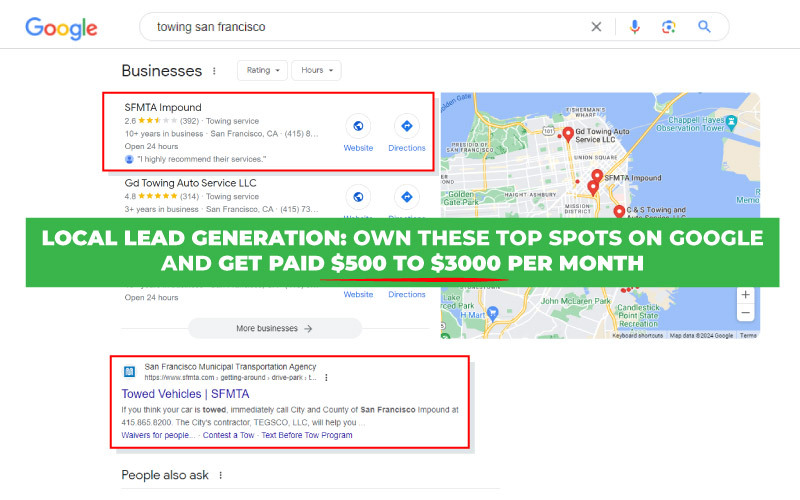
Amazon retail arbitrage is worth it if you approach the business model strategically. As an arbitrage seller, you should:
You can start retail arbitrage with around $500. You can learn the basics of online sales through the Amazon platform. Moreover, you can use tools like Keepa to track pricing history and prepare products for the Amazon FBA fulfillment center.
Lenny Smith and Jake Zaratsian of Jungle Scout ran an Amazon retail arbitrage experiment. They looked for profitable Amazon products in 5 retail stores, including Walmart, TJ Maxx, Target, Marshalls, and Costco. According to them, they couldn’t find any profitable products at Walmart. They later found out that Target and Costco carried too many products packaged and branded under their own private label brands. As such, they couldn’t sell these items on Amazon. Eventually, the duo found profitable products at TJ Maxx and Marshalls. This included a $26 curling iron that was being sold for $74 on Amazon.

However, profit margins for Amazon retail arbitrage stores are often slim. So you will need to find profitable products you can sell for higher price tags on Amazon. You'll also have to use your own resources to package and ship the products to Amazon. Next, you'll have to pay Amazon to store your inventory and ship the product to the customer if it sells.

Furthermore, many of the products you would want to sell on retail arbitrage are restricted by Amazon. Although it is possible to get ungated and become eligible to sell these products, it usually requires creating a wholesale account with an authorized wholesale distributor. You'll also have to purchase products through the wholesale distributor and scan your invoices to send to Amazon for approval. Sellers who don’t go through this process are limited in the products they can sell on Amazon.

Although many online gurus promote retail arbitrage for quick profits, a retail arbitrage seller on Reddit tells a different story. The seller affirms that while retail arbitrage is profitable, it usually takes at least 6 months to realize this profit. Besides, Amazon gets flooded with retail arbitrage clearance items at the same time. This can drive the price down for everyone selling the same products.

Overall, Amazon retail arbitrage may not be a scalable online business with consistent income potential. Those who have $10,000+ to invest into an Ecommerce business may instead want to explore Amazon wholesale or private label.
In this feature, we talk about Amazon retail arbitrage and the 4 hidden dangers of the business model. We also tell you why it has become difficult in 2024.
1. Amazon retail arbitrage has very low profit margins.
Amazon retail arbitrage has very low profit margins, ranging around 15% to 30%. In addition to that, entrepreneurs also have to cover Amazon fees. These include referral fees, fulfillment fees, and storage fees. This can further impact the overall revenue of your arbitrage business.

So when setting your selling price, be sure to account for these costs. You want to maintain a healthy profit margin by considering your business expenses. It's important to regularly reassess your profitability to make informed decisions regarding your sourcing and pricing strategies. Moreover, low-cost retailers are also entering the Amazon marketplace all the time. This can be a serious challenge for sellers looking to pursue retail arbitrage.
2. Scaling an Amazon retail arbitrage business can be really difficult.
Scaling an Amazon retail arbitrage business can be difficult for most sellers. It requires scouring retail stores all the time to keep your inventory alive. Not only does this take up a huge chunk of your time. It also eliminates the possibility of scaling up since you’re limited to local supplies.
Sure, you might maintain a good profit margin and earn some money. But for the most part, that’s all it’s going to be: a way to make money on Amazon. You’re also not building a brand of your own since you’re selling a product that’s already been labeled by someone else.
If you’re dreaming of being able to develop your own brand and eventually sell it off years later, retail arbitrage isn’t for you.
3. Ads can be very costly.
Ads can be expensive if you're doing retail arbitrage. Case in point, the average click-through-rate on Amazon is 0.41%. A click-through-rate (or CTR) is the number of clicks your ad gets relative to the number of impressions it generates. For example, if you get 1 click per 100 impressions, your CTR is 1%, which is extremely low, given that Amazon uses paid ads.
The more competition there is, the higher the chances are of an ad to have an expensive CPC, which is the case for most arbitrage businesses. Sellers pay for each click they get, which is also known as cost-per-click (CPC). According to Ad Badger, the average Amazon CPC in 2024 is $0.95.
4. Rules on Amazon Brand Registry and Gated categories can restrict your arbitrage business.
Amazon Brand Registry and Gated categories can limit your opportunities in ecommerce. Typically, an Amazon FBA seller is required to register their products on the Amazon Brand Registry. According to Amazon, Brand Registry helps protect your IP and grow your business. Unfortunately, arbitrage sellers are not allowed to take this route since they're merely purchasing and selling branded products.
Amazon also has Gated categories that often cause problems with retail arbitrage products. This is a product category restricted by Amazon because they are licensed and registered by established brands. While it's possible to obtain approval, youll have to pay an expensive fee to sell a product in that specific category.
5. Most product niches are already over-saturated on Amazon.
Most product niches are already over-saturated on Amazon, making it difficult for newcomers to gain sales.

Emboscata reports there are now over 600 million products listed on the Amazon marketplace. The website also points out that 12 million of these are being sold by Amazon itself. Globally, Amazon has over 300 million customers, with approximately 200 million being Amazon Prime subscribers.
While these numbers look promising for an aspiring Amazon seller, they also show product oversaturation. It would also be very difficult for first-time Amazon sellers to find a unique and profitable product in 2024 because of several reasons:
6 Competition on Amazon retail arbitrage is tougher than ever.
Competition on Amazon retail arbitrage has become increasingly difficult over the years. These days, arbitrage sellers are not only competing with thousands of similar shops. There are also third party sellers and big brands from China that are selling items at very low prices. According to JungleScout, over 60% of sales on Amazon are from third-party sellers.
In addition, established brands and companies are given greater priority by Amazon. Many manufacturers are also cutting the middle man to operate on slimmer margins. That way, they can sell products for a cheaper price range than regular FBA sellers.

Moreover, you'll also have to deal with product hijackers. Product hijackers not only leave negative reviews on a product listing. They also create and sell products that are extremely similar to existing bestsellers.
According to one Redditor, Amazon's platform "is set up to allow numerous sellers on the same product/listing" if the product or category is not gated. As such, hijackers can easily jump into the action to "steal your sales."
You will also have to compete against Amazon itself. The platform currently has over 400 brands that offer approximately 240,000 products online, with Amazon Basics being one of their biggest brands.
7. You have no control over many aspects of your retail arbitrage business.
You have no control over pricing, supply chain, inventory, and other aspects of your retail arbitrage business. Simply put, you are heavily reliant on your suppliers and Amazon as a platform.
Think about it this way:
- What if your go-to-store or retailer stops carrying the product you’re purchasing from them?
- What if their prices suddenly skyrocket?
- What if they randomly decide to stop retailing to third party sellers and just sell the product themselves?
Sellers also report about incidents where their accounts have been suspended or temporarily banned for no apparent reason. Amazon has full control over your business, and there may be little that can be done on your part. Once you create an Amazon account or a seller account, you’re basically playing by Amazon rules, not yours.
Unfortunately, sellers also have to deal with damaged products coming from Amazon warehouses. Some sellers report about items being damaged, caused by natural disasters or human error.
These issues are extremely detrimental to any retail arbitrage business and can quickly diminish returns. Worse, they can cause your business to fully shut down.
What is Amazon Retail Arbitrage?
Amazon retail arbitrage is the practice of buying low cost or clearance items from physical stores and reselling them on Amazon at a higher price. This allows sellers to earn profit from the price difference.

For example, if you find a toy worth $5, and sell it on Amazon for $15, you take home around $10 dollars in profit minus Amazon fees. This business model is suitable for newcomers looking to enter ecommerce and experienced sellers aiming to diversify their income.
Retail Arbitrage vs Online Arbitrage
A retail arbitrage seller purchases products from retail stores and resells them on Amazon. In comparison, an Amazon online arbitrage seller buys product from online sources. These two business models are extremely similar but mainly differ in the mode of product sourcing.
Retail Arbitrage vs Dropshipping
Retail arbitrage and dropshipping are distinct business models with different processes for online sellers. Retail arbitrage involves purchasing products from physical retail stores and then selling them online for profit. In contrast, dropshipping allows sellers to list products in their online stores without purchasing the items upfront. There is no need to manage or store inventory, and the financial risk is reduced since sellers do not buy products until they have been sold.
Is Amazon Retail Arbitrage Profitable?
Amazon retail arbitrage is profitable, with 62% of sellers making around $5,000 per month. Meanwhile, around 25% of retail arbitrage sellers only earn $500 or less. 46% of sellers also need up to six months to make a profit and 48% of profit margins on products usually range around 20%.
Why Local Lead Generation Is Better Than Amazon Retail Arbitrage?
Retail arbitrage can be potentially lucrative but they also come with many challenges. The low barrier to entry has made it a saturated business model. Competition has become more intense over the years. Plus the low profit margins and growing Amazon fees may discourage anyone thinking of exploring retail arbitrage as a business model.
In comparison, doing local lead generation can be more profitable and rewarding. With lead gen, you are creating websites that attract customers for small businesses. These sites usually cost a few hundred dollars to build. Once the sites start getting good ranking on Google, you can rent them out to local business owners for $500 to $3,000 a month.

This business model can be highly scalable. Unlike retail arbitrage, you won't have to visit retailers daily to find profitable products. You also won't have to deal with thousands of competitors. Instead, you are building digital real estates that help you earn passive income. You'll have plenty of time to build and rank more websites. This can increase your earnings without having to compete with thousands of sellers selling the same products. You're just going against a few small business owners in specific areas and niches.
Local lead generation shines because every city is its own market. In fact, each city offers 50-100 potential niches that you can get into. Plus with 41,704 zip codes in the US, you have plenty of potential customers to target as you create and rank lead gen sites.




